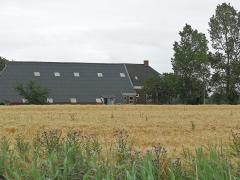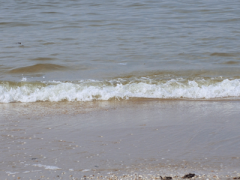Halving nitrogen waste in the European Union food systems requires both dietary shifts and farm level actions
This paper analyses options to halve nitrogen losses to the environment by 2030, which is a target of the Farm to EU Fork Strategy. We found that a combination of interventions to (a) increase farm level nitrogen use efficiencies, (b) reduce food waste and (c) a dietary shift towards diets with, especially animal, protein achieve this target at the lowest societal costs.
Losses of various nitrogen (N) compounds to air and water have multiple impacts on both on environmental quality, ecosystems and human health, also in Europe. In 2008, ammonia (NH3) and nitrate from EU agriculture contributing an estimated €61–215 billion, equivalent to 0.5–1.8% of the GDP. Reducing these N losses therefore is pivotal to transform the EU food system to meet environmental sustainable development goals.

Option to reduce N losses
The largest potential to increase N efficiency of the current agro-food system was found to lie in the livestock sector. From 144 possible combinations of intervention options analysed, we found that 12 combinations of interventions would reduce nitrogen losses by about 50%, 11 involving diet change. We further carried out an assessment of the societal appreciation of combinations of interventions considering private and public costs of the intervention measures, public benefit through effects on health and increased biodiversity of ecosystems, and public costs for overcoming socio-cultural barriers.
Nitrogen budget and efficiency of the EU food system
We built a simple model to analyse options to reduce N waste and quantify a food system nitrogen budget for the EU. For the year 2015, the EU used 20 Tg of virgin (new) N to deliver 2.5 Tg N in food and 1.2 Tg N in fibres to consumers, yielding a food-system nitrogen use efficiency (NUE) of 18%.
Authors
Specifications
- Publication title
- Halving nitrogen waste in the European Union food systems requires both dietary shifts and farm level actions
- Publication date
- 28 August 2022
- Publication type
- Article
- Page count
- 10
- Publication language
- English
- Magazine
- Global Food Security
- Issue
- 35 (2022) 100648
- Product number
- 4358




